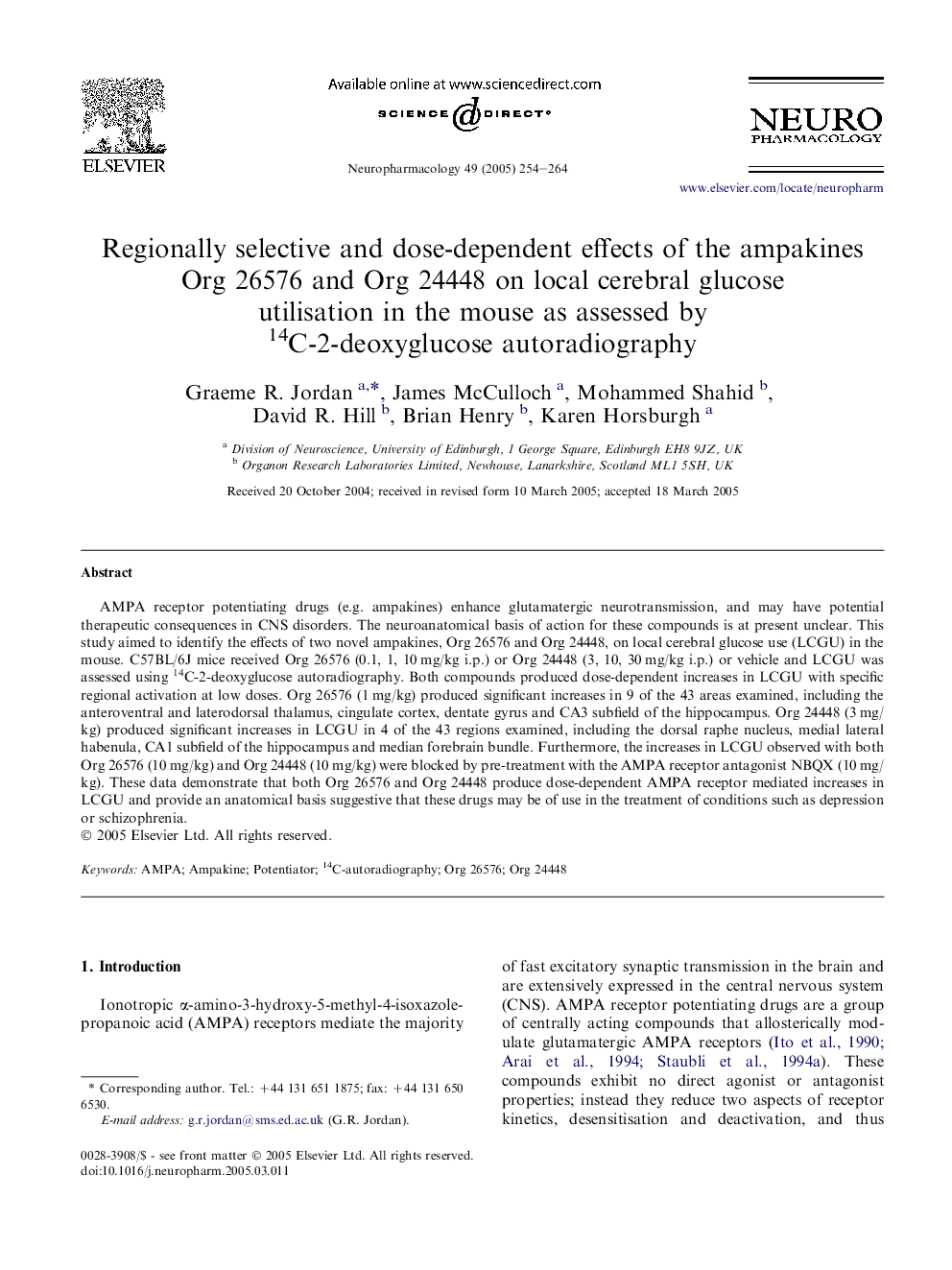| Article ID | Journal | Published Year | Pages | File Type |
|---|---|---|---|---|
| 8998267 | Neuropharmacology | 2005 | 11 Pages |
Abstract
AMPA receptor potentiating drugs (e.g. ampakines) enhance glutamatergic neurotransmission, and may have potential therapeutic consequences in CNS disorders. The neuroanatomical basis of action for these compounds is at present unclear. This study aimed to identify the effects of two novel ampakines, Org 26576 and Org 24448, on local cerebral glucose use (LCGU) in the mouse. C57BL/6J mice received Org 26576 (0.1, 1, 10Â mg/kg i.p.) or Org 24448 (3, 10, 30Â mg/kg i.p.) or vehicle and LCGU was assessed using 14C-2-deoxyglucose autoradiography. Both compounds produced dose-dependent increases in LCGU with specific regional activation at low doses. Org 26576 (1Â mg/kg) produced significant increases in 9 of the 43 areas examined, including the anteroventral and laterodorsal thalamus, cingulate cortex, dentate gyrus and CA3 subfield of the hippocampus. Org 24448 (3Â mg/kg) produced significant increases in LCGU in 4 of the 43 regions examined, including the dorsal raphe nucleus, medial lateral habenula, CA1 subfield of the hippocampus and median forebrain bundle. Furthermore, the increases in LCGU observed with both Org 26576 (10Â mg/kg) and Org 24448 (10Â mg/kg) were blocked by pre-treatment with the AMPA receptor antagonist NBQX (10Â mg/kg). These data demonstrate that both Org 26576 and Org 24448 produce dose-dependent AMPA receptor mediated increases in LCGU and provide an anatomical basis suggestive that these drugs may be of use in the treatment of conditions such as depression or schizophrenia.
Keywords
Related Topics
Life Sciences
Neuroscience
Behavioral Neuroscience
Authors
Graeme R. Jordan, James McCulloch, Mohammed Shahid, David R. Hill, Brian Henry, Karen Horsburgh,
